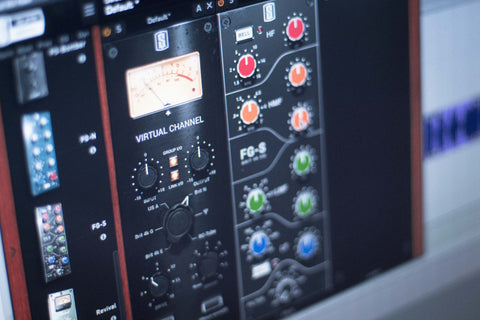Building The Perfect Kick
Building The Perfect Kick
With more and more genres being dictated by the quality of your kick drum we thought it might be a good opportunity to explore some of our favourite techniques for getting this beasts of the low end to really pop.
It’s with our pleasure to present our top 10 tips for getting that perfect hit, a skill you'll need when mixing drums to get them sounding 'just right'!
- Side-Chaining – Although this won’t specifically change the characteristics of your kick the process of ducking the sub when the kick hits can do wonders to the perception of drum size. Ryan recently explored this technique and more in his post about controlling bass in your mixes.
- Hi-Hat Layer – A cheeky trick that does wonders in allowing your kicks to cut though the mix. Slowly blend in a hi-hat sample that replicates the kick pattern. Be careful not to mix too loud though as a little goes a long way but this super quick technique can ensure your bottom end works on any system.
- Rough EQ Placements - Now every kick is different but there’s no harm in offering a rough estimate when Eq’ing.

- HPF – Sub frequencies in kick drums can be a consistent pain, as they love to steal headroom. High pass them starting at 25Hz and work up until you start to loose some weight, back off and you’ll have the sweet spot.
- Low-Mids – Often a problem area in kick drums this can range from 130-300Hz and is always worth investigating. A dip with a relatively tight Q can tighten the drum further.
- Pultec EQ Trick – The Pultec EQ was originally developed in the 1950’s to help add clarity to early phone conversations. Little be known to the early developers was that they’d created a piece which would become incredibly sought after even to this very day.
Try boosting and cutting the same low frequency band for a more focused kick sound. This unique trick adds a low frequency bump but also offers a low mid scoop that can do amazing things to a lacking kick drum. It works beautifully on the Pultec EQ plug ins also.

- Phase – A word that is often thrown around but what does it actually mean? Basically, it’s the synchronisation of two waveforms that play at the same time and are of similar frequencies.
The diagram below explains this a little more clearly.

Phase issues in layering kicks can be solved by one of two ways:
- Audio Editing – get in there and drag the audio until the waves beautifully line up.
- Utility – Try flipping the phase using a plug in. This essentially turns the wave over so it matches the other. Ableton’s ‘Utility’ will do the job as will Logics ‘Gain’ Plug in.
- Layering – It’s inevitable that sometimes you won’t be able to find the perfect kick drum but this is where layering comes in. Dividing the kick down into frequencies or characteristics can allow you to choose the right layers to get the most full and impact heavy sound.
It’s often worth getting a little aggressive with the EQ to carve out gaps and prevent too many sub frequencies building up in the bottom end.
- This doesn’t apply to all kick drums but often they’ll need tuning to the key of your track. If you’re struggling to hear the note tune the kick up an octave (12 semi-tones) first then tune from there. Once you’re happy drop it back down to the original octave and you’ll be good to go
- Compression. Your compression settings can either make or break the quality of kick. A few things to consider:
- Does it actually need compressing?
- What are you trying to do?
- Quick attack – this will clamp down on the initial hit of the kick flattening the sound and making the whole thing more compressed.
- Slower attack – this will let through the initial ‘click’ then clamp onto the tail lengthening the tail of the drum.

- Parallel compression – A technique that’s always worth investigating. This can be achieved in a few ways. The principle idea is to have a heavily compressed signal blended against the original signal hence the transients are preserved whilst allowing you to add the extra energy of the compression. Here are a few thoughts on the process:
- Many modern compressors have a wet / dry mix on to allow easy experimentation of Parallel compression – it’s always worth a shot.
- Try setting up one compressor on an aux and send different amounts of the kick, snares and hats to it. Often the smallest amounts can have a huge impact.
- Sine waves can be incredibly helpful in adding weight to a flat kick drum. After all, the king of the kick drums machines the humble 808 is predominantly based on one. If you aren’t able to find an 808 why not try this trick.
- Run a sine wave under your track. Preferably playing the note that is in key with your composition.
- Place a gate on the channel with the input being set to your kick drum.
- Now set the gate to expand and adjust the settings to suit.
- Every time the kick plays you’ll get a short burst of low sine wave adding weight to the bottom end.
Feeling drum inspired?! Why not check out extensive collection of Live Drum Samples
